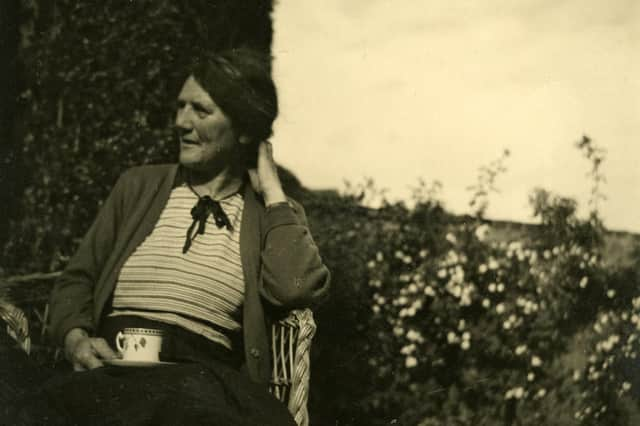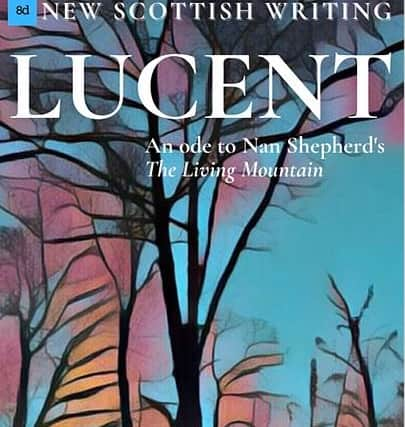Book review: LUCENT - Women Writers on Sensuality in Scotland


Nan Shepherd’s The Living Mountain was written in 1944, but failed to find a publisher until Aberdeen University Press did a small print run in 1977. Hauled from obscurity in the last decade, this profound, unsentimental account of one woman’s engagement with a landscape has swiftly become a classic in the world of nature-memoir.
Its rediscovery has prompted other artists and writers to respond to it, from choreographer Simone Kenyon’s site-specific performance Into the Mountain to this anthology of writing by women. Dunfermline-based 8d Press specialises in beautifully crafted books with small print runs and LUCENT, an attractive small-format hardback, is certainly a desirable object.
Advertisement
Hide AdThe poetry and short prose pieces are grouped by theme or mood: Blue Ache, Bright Mist, The Longing, Skin-to-Skin, and so on. They come from poets, spoken word artists, scientists and playwrights. Some are clearly beginning writers, others have publications and prizes behind them. Writing about Scotland landscape and nature in homage to Shepherd, the approaches they take are impressively varied, but the quality is variable.


Some writers have loved Scotland from afar: Bidisha Chakraborty writes from Calcutta of a country she knows only from books; Melanie L Wells-Alvarado dreams of Scotland from Costa Rica. Others are Scots writing about places they love: Mallaig, Wanlockhead, Glencoe. Not everything is fact-checked: one writer describes “the scenic hills of the Central Belt… the Mendips and the Campsies.”
Gayle Smith writes of a climb up Goat Fell as a moment of self-discovery, Farah Haq about how the cold damp air of a Glasgow spring and “the waft of the chippie” conjure memories of her childhood. Several writers dive into myth, with Aine King’s selkie poem a stand-out example.
The pitfalls of writing about place are somewhat in evidence: nostalgia, melodrama, sensual description which tips over into purple prose. Sadie Maskery writes well about Tantallon Castle in East Lothian, a place where the dark events of the past bleed into the present, and the sense of deep time – when the Bass Rock was a volcano – makes the present day appear like the briefest moment.
Erica (EE) Benson, an environmental scientist turned writer, brings a forensic eye for detail to her sequence of haiku, as well as an intuitive sense of musicality. She comes close to the spirit of Shepherd, as does Finola Scott, observing Lenzie Moss near Glasgow in a prose-poem called “Walking Through Time”:
“There is no external, no cars, trains, / only here, this wood, the sound and feel of / soft sphagnum squelch.”
Advertisement
Hide AdThis is a Shepherd moment when, without drama or fanfare, the boundaries between interior and exterior melt a little, and the writer enters the landscape (or perhaps vice-versa) in a new way.
LUCENT: Women Writers on Sensuality in Scotland, 8d Press, £22.95
A message from the Editor
Advertisement
Hide AdThank you for reading this article. We're more reliant on your support than ever as the shift in consumer habits brought about by coronavirus impacts our advertisers.
If you haven't already, please consider supporting our trusted, fact-checked journalism by taking out a digital subscription at https://www.scotsman.com/subscriptions